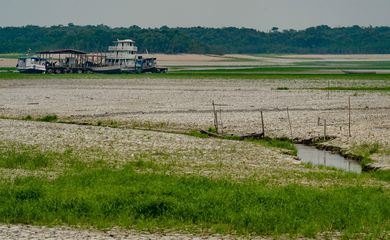Rivers in Amazon basin slow to recover flow during rainy season

Despite the start of the rains in the Amazon region, the rivers are taking a long time to recover their flow. According to the weekly climate monitoring bulletin by the National Institute for Amazonian Research (Inpa), only two of the 32 river basins in the region showed a regular volume of rain for January, with five having climatological indicators close to that for the period.

Renato Senna, meteorologist and researcher at the institute’s Environmental Dynamics Center, noted that the regular rains have been observed in the springs—in Peru and Colombia, more specifically in the Ucayalli and Marañon basins. “Even though the rains have returned, as expected for this time of year, in a large part of the region they are lower than usual,” he pointed out.
Even after the beginning of the rainy season, Inpa reported, the El Niño phenomenon—which is the warming of the surface waters of the Equatorial Pacific—and the warming of the North Tropical Atlantic continue to have an impact on the region. Both influence wind circulation, inhibiting cloud formation and regular rainfall as a result.
The institute’s climatological monitoring of the basins also shows a deficit in precipitation. The basin of the Purus river, a tributary of the Solimões, has seen 211 mm in the last 30 days, when normal levels are 264–304 mm. The condition should interfere with the recovery of the areas, especially for the recovery of soil moisture, which was affected after the drought of 2023.
The recovery of the flow volume of the main rivers to the west—such as Solimões, Negro, and Madeira—is also vital for the navigability of cargo and people transportation, Senna went on to say.



